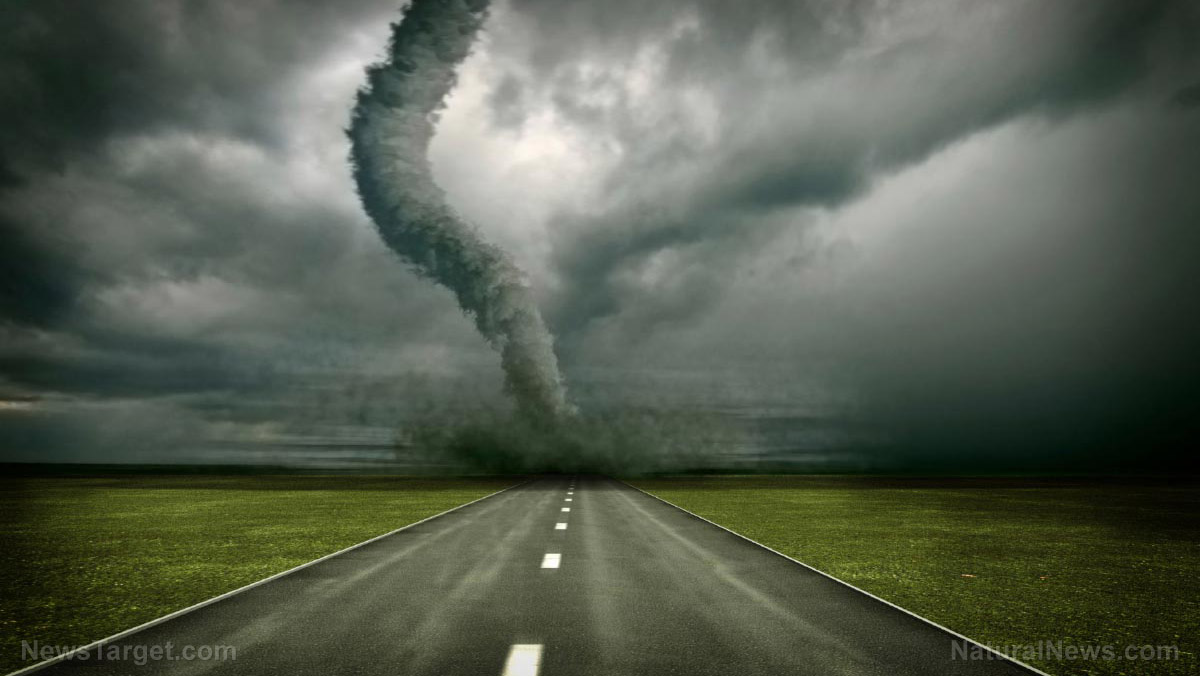Largest US power grid issues emergency alert due to high temperatures across the East Coast and Midwest
08/02/2023 / By Zoey Sky

PJM Interconnection LLC (PJM), the largest electric grid operator in the U.S., issued an emergency alert for a second day on July 28 due to high temperatures across the East Coast and Midwest.
The company, which serves 13 states, declared Energy Emergency Alert Level 1 as excessive heat advisories and warnings were announced for several areas from Illinois to New Jersey.
An updated map from the National Weather Service (NWS) showed that heat advisories and warnings applied to large areas served by PJM. On July 27, PJM also issued a similar level-one emergency due to the heat.
The operator reported that its preliminary peak load was about 148,000 megawatts and was forecasted to peak at around 155,000 megawatts on July 28. PJM issued the alerts to help prepare generators for the onset of intense heat, referring to the organization’s gas-powered generators.
“A Hot Weather Alert helps to prepare transmission and generation personnel and facilities for extreme heat and/or humidity that may cause capacity problems on the grid. Temperatures are expected to be near or above 90 degrees in these regions, which drives up the demand for electricity,” explained PJM. (Related: Security expert: US power grid VULNERABLE to Beijing’s control with its dependence on China-made transformers.)
On July 27, utility spokesman Jeffrey Shields said PJM has enough generation to meet forecast demand. However, operators will continue to monitor the grid conditions for any further changes.
The Midcontinent Independent System Operator (MISO), which mostly serves states in the Midwest and Northern Plains, issued a similar alert on the same day.
Earlier in 2023, PJM published a report suggesting that state and federal policies to de-carbonize the grid are potentially increasing reliability risks during the transition because of a possible timing mismatch between resource retirements, load growth and the pace of new generation entry.
De-carbonization refers to the reduction of fossil fuels and increased reliance on sustainable energy sources like hydroelectric, solar or wind power.
200M Americans under heat advisory or flood warning recently
According to the NWS, an estimated 200 million U.S. residents, or about 60 percent of the country’s population, have been under a heat advisory or flood warning or watch since July 27.
Night temperatures were forecasted to stay hotter than usual, which prompted excessive heat warnings from the Plains to the East Coast. From July 27 to 28, the number of people under a heat advisory has gone up from 180 to 184 million.
Meanwhile, the number of people under a flood warning or watch went down from 17 to 10 million.
Moisture moving towards the Southwest has helped cool the southernmost counties of California and parts of southern Arizona, but excessive heat warnings remain for most of the area.
Aside from the heat, severe thunderstorms were forecasted for parts of the Great Lakes and Ohio Valley.
According to the NWS, cities that are still under heat warnings include:
- Kansas
- Philadelphia
- St. Louis
- Virginia Beach
- Washington
The NWS cautioned that these areas may see high temperatures increase well north of 90 F, or even 100 F in other areas. Additionally, oppressive humidity currently affecting the majority of the country will contribute to widespread heat indices of 100-110+ over said areas.
The agency also warned that nighttime temperatures may only fall into the upper 70s and low 80s, which will reduce overnight relief from the daytime heat.
Those affected by the heat wave must practice heat safety, especially if they are going to spend extended periods outdoors.
In New York City, utility Con Edison sent out a text blast advising residents to be frugal with air conditioning to conserve electricity.
Overtaxing an electrical grid can cause blackouts, which are an inconvenience, and can also lead to equipment failures and major pollution as equipment restarts.
Last July 27, the Biden administration instructed the Labor Department to increase inspections of potentially dangerous workplaces, like construction sites and farms, and called for stricter enforcement of heat safety regulations.
Watch the video below for tips on how to survive a summer power outage and how to stay cool.
This video is from the Daily Videos channel on Brighteon.com.
More related stories:
Emergency preparedness: How to charge your smartphone during a power outage.
Rise of EVs is driving more demand for electricity as grid power generation declines.
Energy commissioner warns: America heading toward power grid “reliability crisis.”
Sources include:
Submit a correction >>
Tagged Under:
big government, chaos, Climate, Collapse, dangerous, disaster, Ecology, electricity, energy supply, environment, flood watch, heat advisory, Midcontinent Independent System Operator, National Weather Service, panic, PJM Interconnection LLC, power, power grid, power supply, weather terrorism
This article may contain statements that reflect the opinion of the author
RECENT NEWS & ARTICLES
COPYRIGHT © 2017 DISASTER NEWS




















